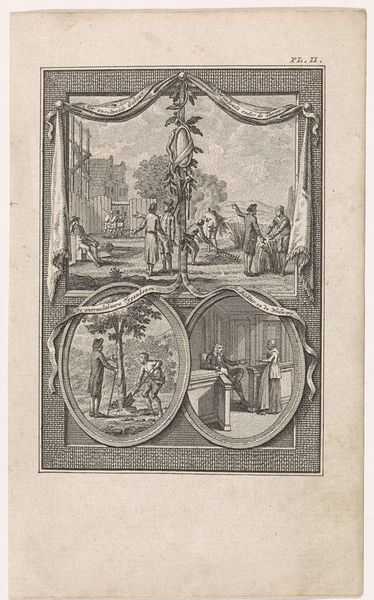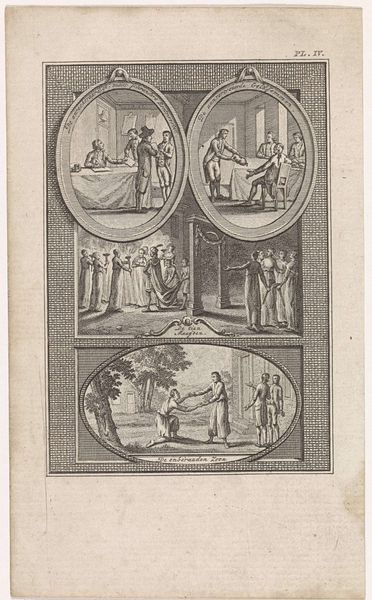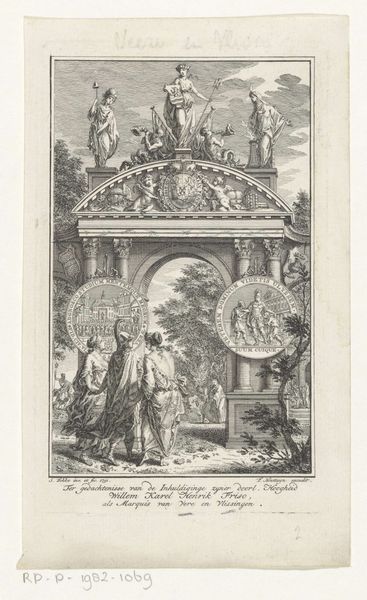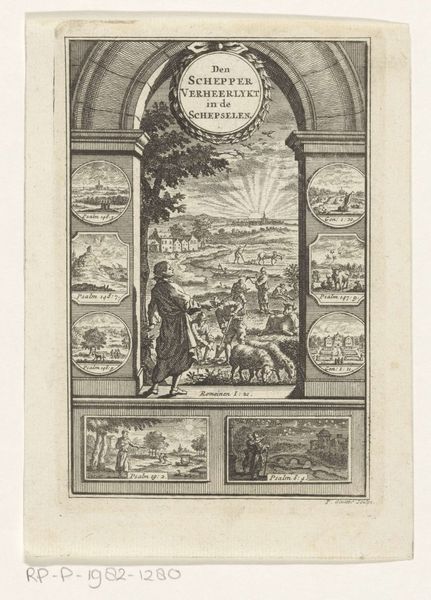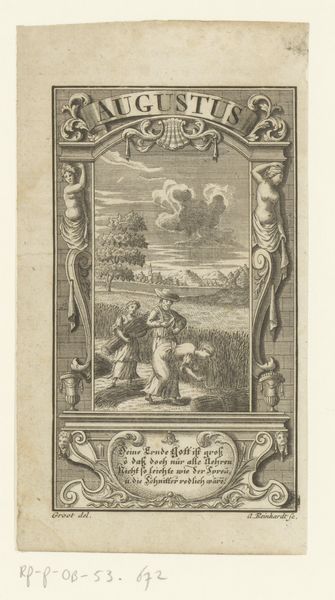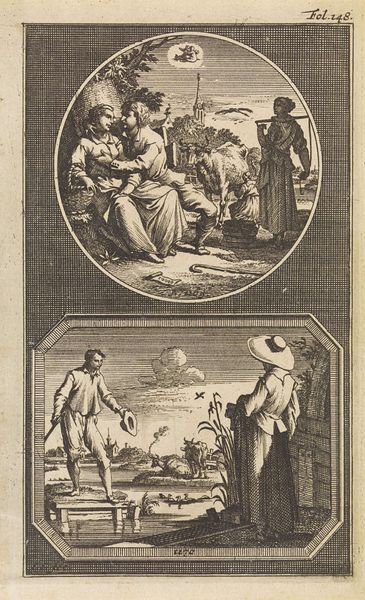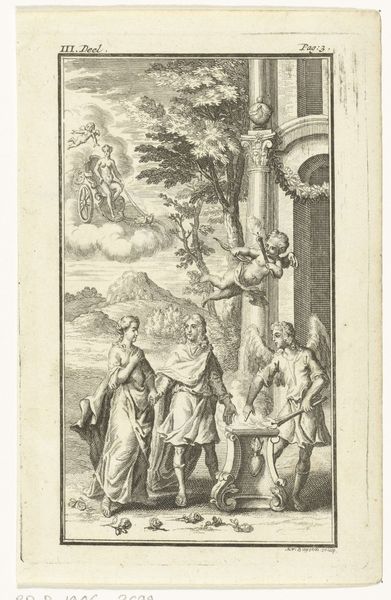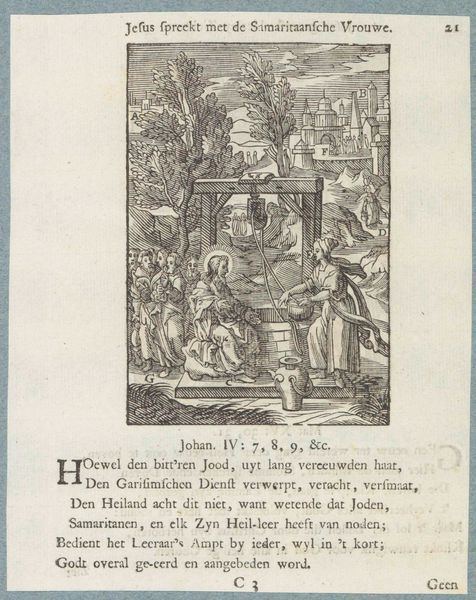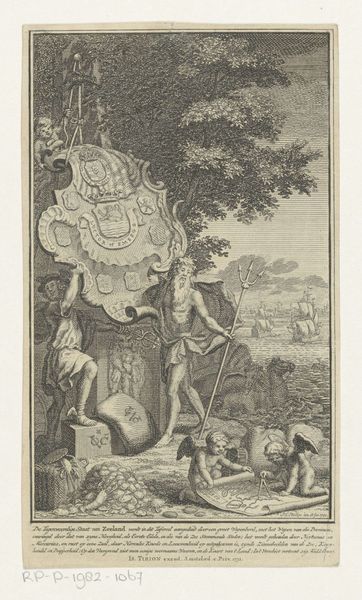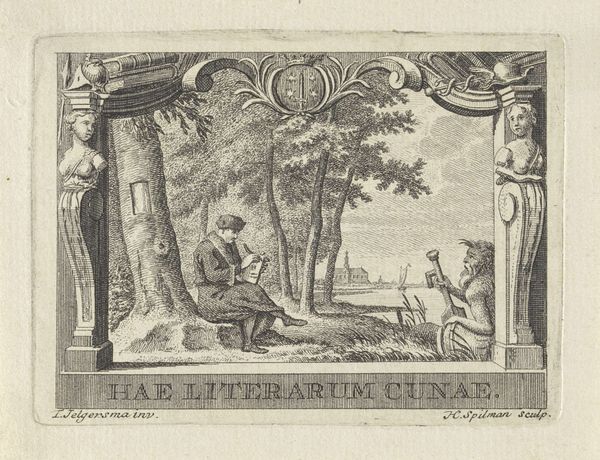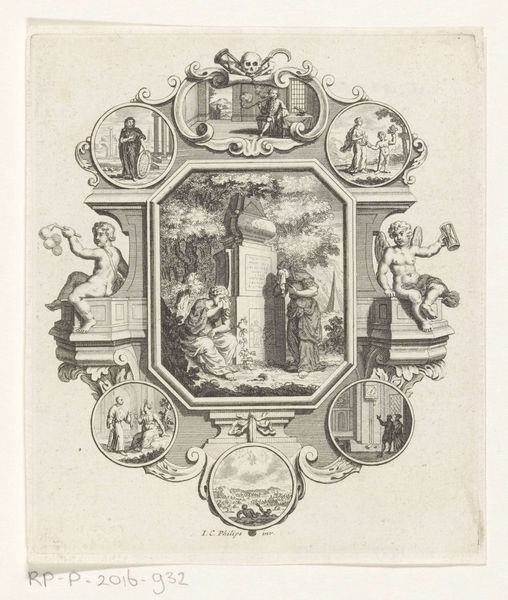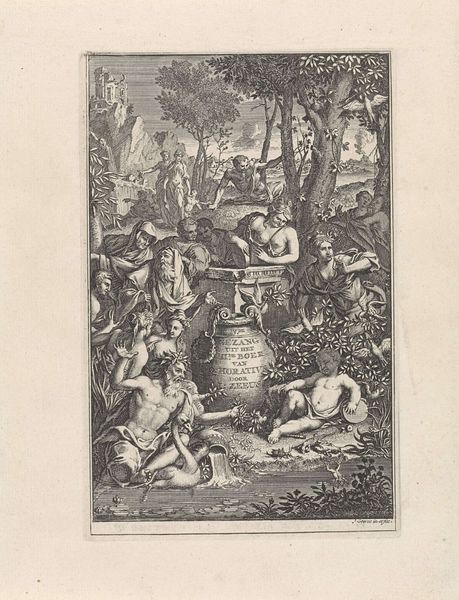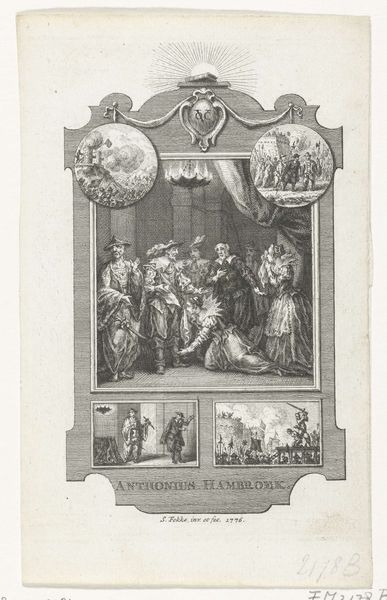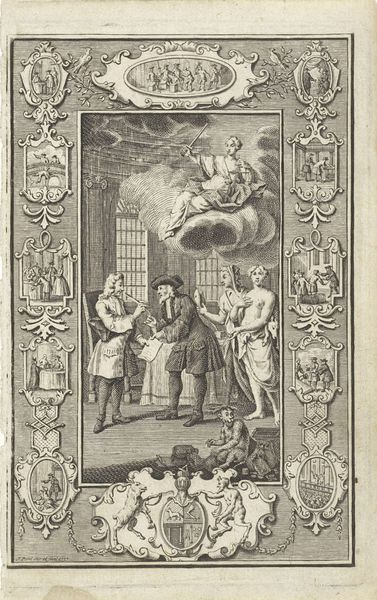
print, engraving
# print
#
landscape
#
romanticism
#
genre-painting
#
history-painting
#
engraving
#
realism
Dimensions: height 153 mm, width 91 mm
Copyright: Rijks Museum: Open Domain
Curator: Let's turn our attention to "Drie bijbelse taferelen," or "Three Biblical Scenes," an engraving created by Theodoor Koning in 1794, here at the Rijksmuseum. Editor: Immediately, I see a rather formal composition— almost like looking into separate worlds or memory fragments. Each is meticulously framed, offering its own self-contained narrative. A real Romantic flavor there too, though presented with such precise linework. Curator: Yes, Koning was working in a time where Romanticism embraced landscape as a powerful setting for narratives. Here, that style merges with elements of realism. There are three distinct scenes. Notice how the circular frame at the top features figures beside a waterfall. The frame beneath that depicts more pastoral scenes. Editor: That central, rounded image almost floats, like a cherished dream or an idealized vision. The sharp lines throughout give everything an elegant, almost academic feel, but the softness within the circles—a pastoral serenity that is comforting. A longing for something simpler? Curator: That is astute! Each vignette presents moments charged with religious and social meanings, reflecting a contemporary desire to find meaning in both history and nature. Notice, for instance, the architectural elements and their arrangement which creates not only physical spaces but perhaps implies more abstract societal structures or religious concepts. Editor: So, these biblical scenes aren’t merely illustrations of Bible stories, but are carefully chosen scenes meant to be interpreted through contemporary cultural frameworks, with the frames isolating the symbolic import of each narrative bit? How interesting. Curator: Exactly! Koning is utilizing visual symbols to tap into larger cultural understandings and continuities in the late eighteenth century, inviting viewers to make meaningful connections to familiar Biblical narratives, to extract and consider meaning for a changing world. Editor: I think what stays with me most is how the rigid framing heightens the dreaminess of the vignettes within. There is something very compelling about how those seemingly contradictory styles marry in the piece. It is as if it encourages a sort of looking and longing, or that you need both to find solace in it, perhaps a quiet call for meaning or for some greater sense of wholeness from fragments. Curator: Yes, absolutely. These visual fragments, indeed, may offer a key to seeing things through an intriguing perspective into history and humanity’s eternal search for understanding, reflected even in its forms.
Comments
No comments
Be the first to comment and join the conversation on the ultimate creative platform.
